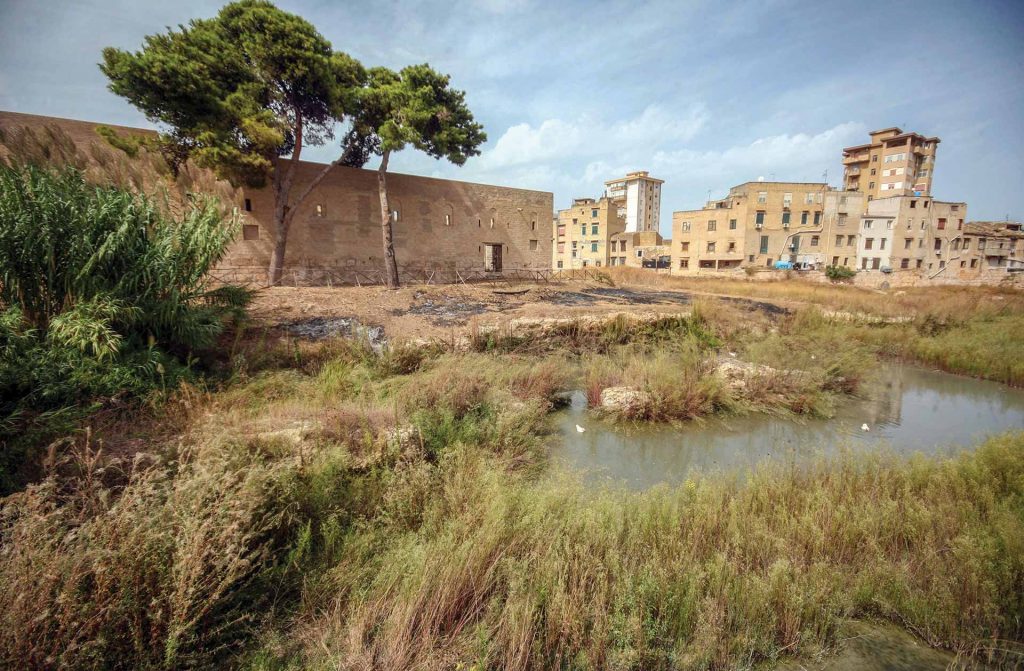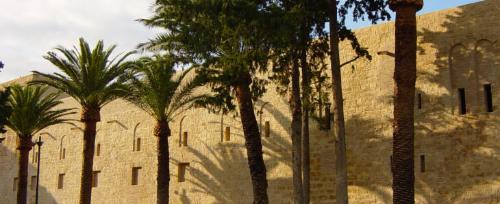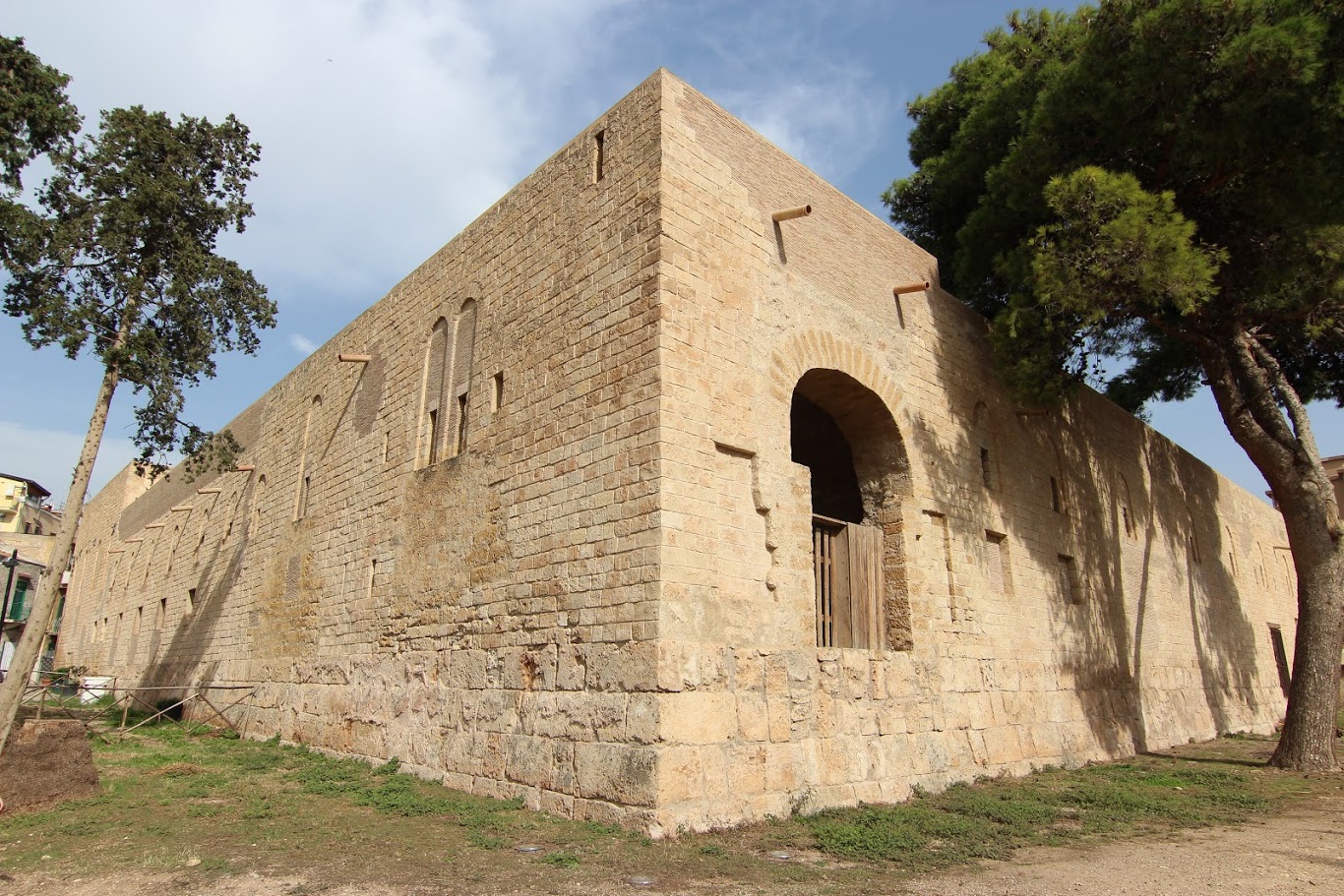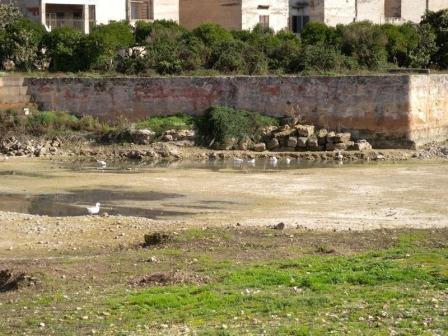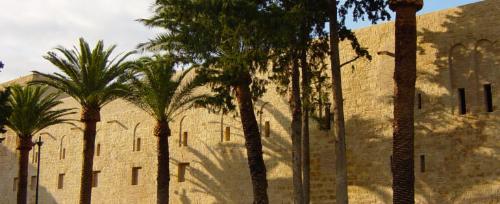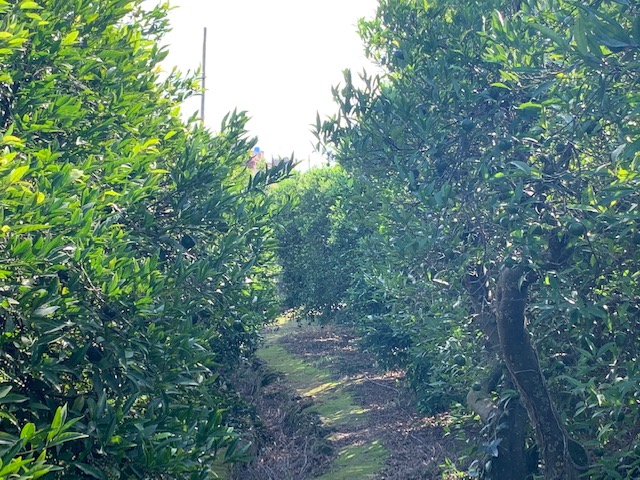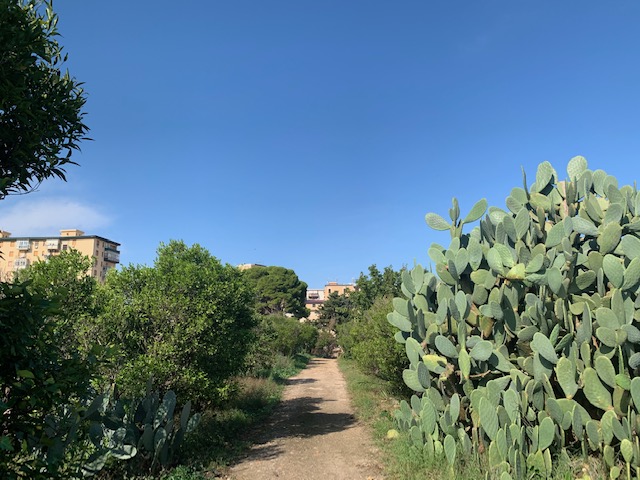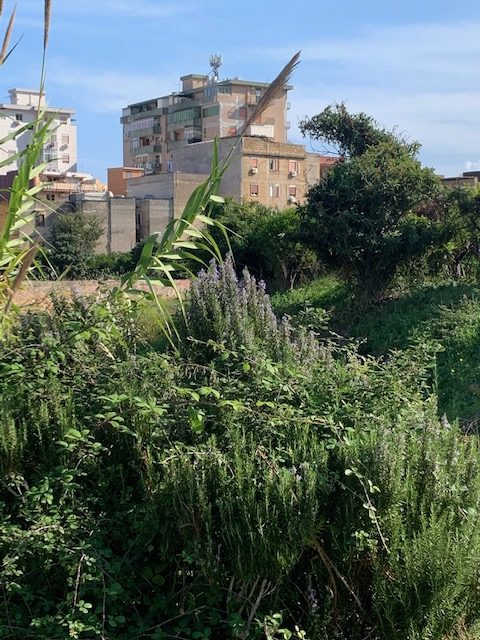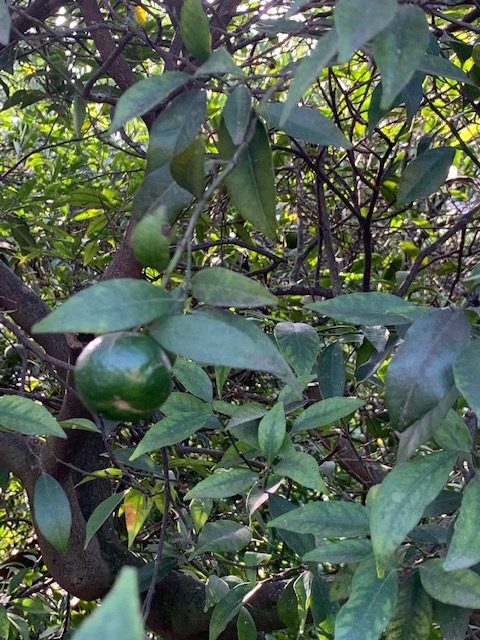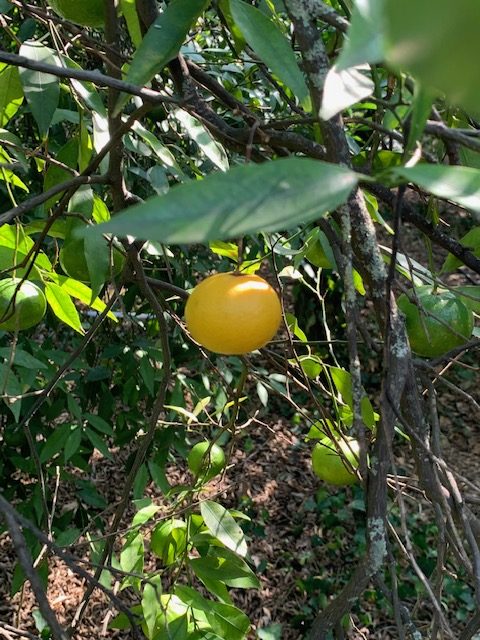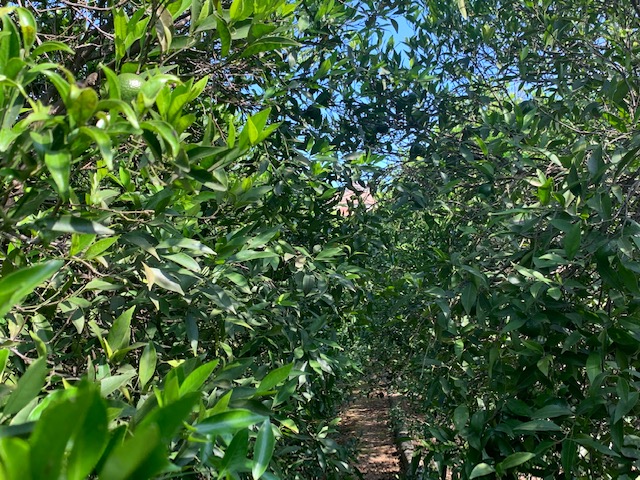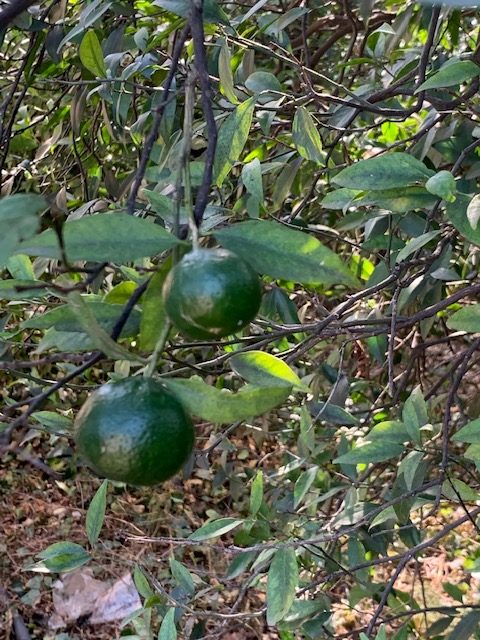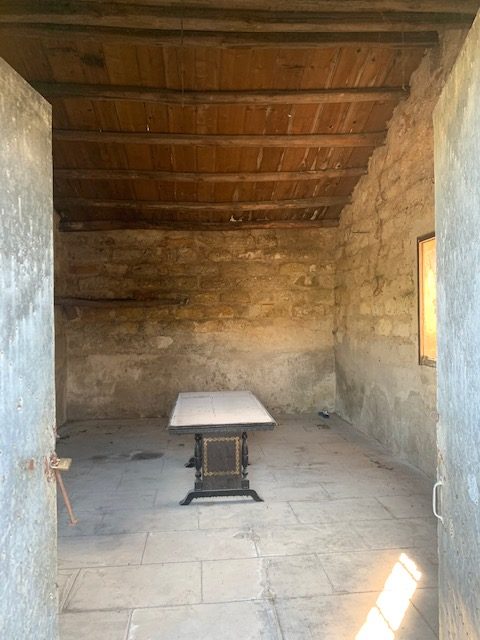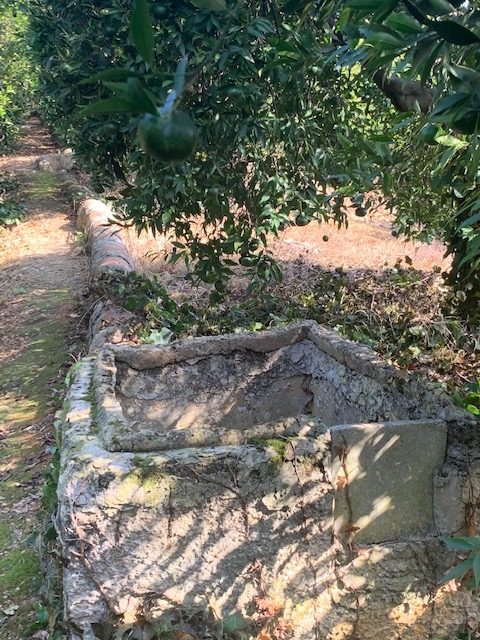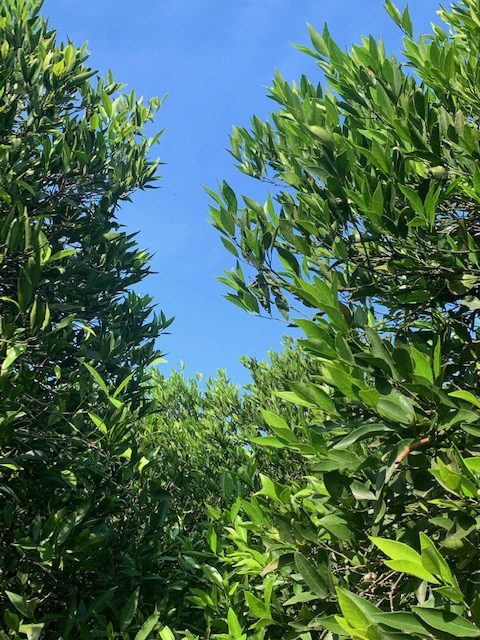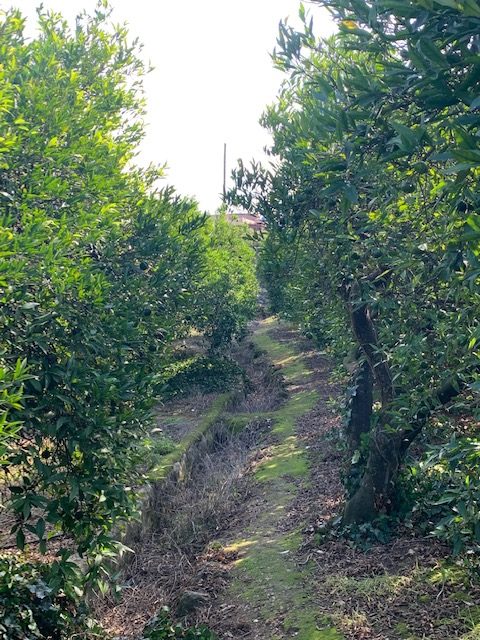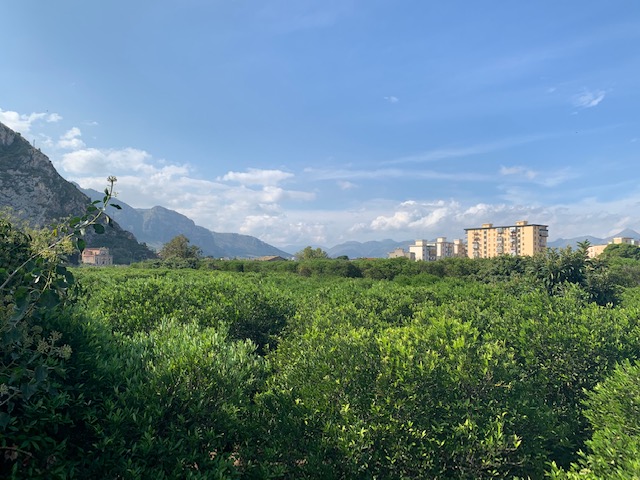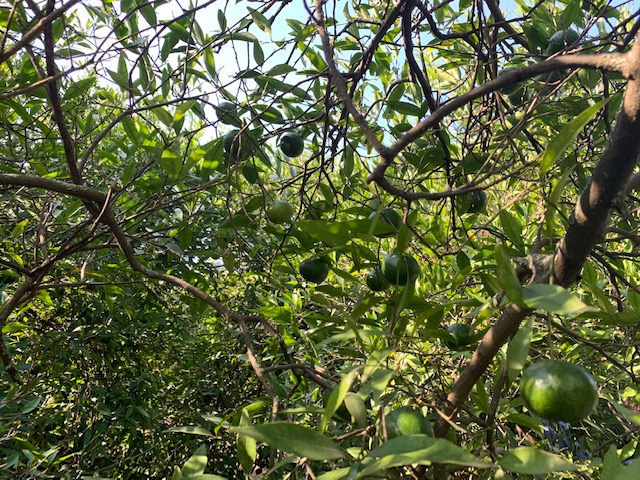
Maredolce Castle or “Palazzo della Favara” and the mandarin grove
This post is also available in:
 Italiano (Italian)
Italiano (Italian)
Maredolce Castle, also called Palazzo della Favara, is an Islamic-style building in Palermo, standing on the slopes of Mount Grifone, in the Brancaccio district; today, it is almost completely hidden from view by the buildings around it.
Presumably built during the Arab domination, between 998 and 1019, by the Emir Kalbita “Ja’Far II”, it was originally named after the spring flowing from the mountain and thus called “Fawwarah Palace”. In 1071, the Norman Roger I – the Great Count – conquered Sicily and took possession of it. Roger II of Altavilla later transformed and enlarged the palace and its garden, creating a large fishpond, fed by a spring at the foot of the mountain.
The building was, therefore, surrounded on three sides by the water coming from an artificial lake called “maredolce” due to its large size: it was also populated by several species of fish.
In the centre, Ruggero built an islet with the shape of an inverted Sicily, on which he planted palm trees and citrus fruits, populating it with many exotic birds. The king, who stayed in the castle of Maredolce in winter, used the lake for leisure cruises and as a fishing reserve.
The palace, rectangularly shaped and featuring a recess in the East corner, was enriched with a private chapel (a tradition in Norman times) dedicated to Saints Philip and James: the “Favara Chapel”, most likely built on the same place where the private mosque of the Emir used to stand. All around, there was a large garden full of trees, citrus and other fruit trees, streams and exotic animals, inspired by the African and Spanish Islamic gardens of that era.
The castle was fondly appreciated by Constance I (1154–1198), who used to spend her summers there with his little son, the future Emperor Frederick II of Swabia (1194-1250). In 1328, the castle was sold by Frederick III of Sicily (1273 or 1274–1337) to the Teutonic Knights, who thus transformed it into a hospital. In 1460, it was granted in emphyteusis to the Sicilian family of Beccadelli dei Bologna, who began to transform the property into a farm; such transformation was eventually completed in 1600 by the new owner, Francesco Agraz, Duke of Castelluccio.
At the beginning of the XIX century, the decline and abandonment of Maredolce appeared inevitable: thus, it soon became known as the “castellaccio” (“the ugly castle”) and was inhabited only by the poor, who also illegally sheltered their animals there.
Expropriated by the Regional Administration in 1992, the castle was eventually restored in 2007, eventually regaining its large central courtyard and the remaining rooms, as well as a thoroughly renovated surrounding area intended for public use.
Nonetheless, little or almost nothing at all remains of the large lake, which has long since dried up: it started becoming a marsh in 1600 and eventually turned into a dry area.
The Tangerine Grove
Today, the citrus grove of Maredolce is part of what little is left of the famous “Conca d’Oro” (“the Golden Basin”), the very plain on which Palermo was built, between the mountains and the Tyrrhenian Sea, and crossed by the Oreto River. This area, which extends for about 39 square miles, is mainly occupied by different types of buildings, following the building spree that occurred in the 1950s and 1960s – also known as the “Sacco di Palermo”, which altered the appearance of the entire area and the city.
Thanks to the fertile soil, the abundant water and the protected and sunny exposure, Conca d’Oro has always hosted agricultural estates and crops. Between 1400-1500, the cultivation of sugar cane developed on a large scale right there, greatly enriching the city of Palermo.
In 1500-1600 the vegetable gardens, the vineyards and all the olive groves were redeveloped. At the beginning of the 1800s, the new era of citrus fruits began: Conca d’Oro became an impressive citrus grove, as also mentioned by the famous writer Guy del Maupassant, who described it as a huge “fragrant forest”. Freshly picked citrus fruits could thus finally arrive in London and Paris, and, since the early 1900s on, also in the USA (it should also be noted that, in that very same period, citrus fruit cultivation massively replaced vines and olive trees also in Liguria).
At first, orange trees (Citrus sinensi ) were cultivated in monocultures until 1850: then, a serious outbreak of Phytophthora seriously damaged a lot of plants. Lemon trees (Citrus x limon) thus took over and enjoyed a great popularity and success for another 50 years; in 1875, the practice of “botanical forcing” was discovered almost by chance, thus providing fresh fruits even in summer – the so-called “verdelli” variety (“botanical forcing” is an agricultural technique aimed at anticipating flowering or fruiting).
Unfortunately, an outbreak of Phoma tracheiphila destroyed the lemon groves, which were thus replaced, at the beginning of the XX century, by the last important citrus fruit that had already arrived in Europe from China: mandarins (Citrus reticulata); in particular, they had already been imported to the UK and simply exhibited in Kew Gardens as ornamental plants; then, they were sent to Malta and, eventually, Palermo, where the actual reproduction started on a large scale. At first, “Avana” mandarins were grown (ripening in December) – so-called due to the colour of the ripe peel, similar to that of Cuban cigars. Then, in the 1950s, a natural mutation was identified near Ciaculli: this new variety would start ripening in February, benefiting from the cold weather to retain more sugar in its pulp and grow lees seeds. Officially named “Tardivo di Ciaculli” is the only ancient species which still grows what’s left of the citrus groves of the Conca d’Oro, namely around Mardedolce.
Some 17 acres (12 on the island in the centre of the dry lake, and 5 all around this area) of the citrus grove are still served by the ancient irrigation system, made of canals and old wells.
The organically-grown plants feature a rather thick layout because they have to shade each other a bit. A part of the mandarin grove is still abandoned and currently awaiting restoration.
A social cooperative has recently won the tender contract for recovering the abovementioned area: 17 acres of land will be thus restored on a shared cultivation basis and by close cooperation with the local Superintendency. The final goal is to give new life to the historic mandarin grove, reopening the paths and thus reviving Maredolce, also with the help of young people with disabilities and convicts.
Worth knowing:
Where does “mandarin” come from?
This term was originally used to identify Chinese dignitaries, or “Mandarins”, due to the colour of their garments.
This post is also available in:
 Italiano (Italian)
Italiano (Italian)
Contatti
Via Giafar svincolo Porto - Vicolo del Castellaccio 21/23 - 90123 Palermo(PA)
+39 091 7071425 – 335 7957161 - Vicolo del Castellaccio, 21/23
Altre info
a pagamento
Aperto da lunedì a sabato e ogni prima domenica del mese.
Lunedì, mercoledì, giovedì, venerdì e prima domenica dalle 9 alle 13, martedì e sabato dalle 9 alle 18.30 La visita ha una durata di 30 minuti ed è accessibile ai disabili.
